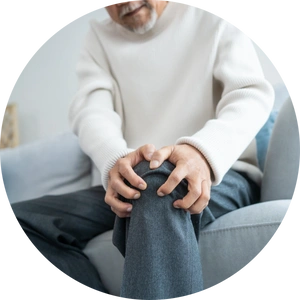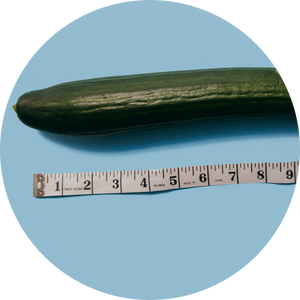Osteoarthritis is the most common joint disorder in the United States. Medical experts estimate that at least 32.5 million adults suffer from osteoarthritis. The vast majority of these individuals are over the age of 55 as osteoarthritis has a clear link to age.
Every weight-bearing joint in your body is at risk of developing osteoarthritis, but it primarily affects the knees. There appears to be a clear link between body mass index and osteoarthritis because of the way obesity can put extra stress and wear on the joints. Losing some weight can provide several health benefits, including a reduced risk of developing osteoarthritis.
What is Osteoarthritis?
Osteoarthritis (OA) is the most common form of arthritis. Often referred to as degenerative joint disease, osteoarthritis has a direct connection with age. The symptoms of osteoarthritis normally start in middle adulthood and slowly get worse as you get older. In some cases, osteoarthritis can suddenly develop as the result of severe inflammation or injury.
What are the Symptoms of Osteoarthritis?
The main consequence of osteoarthritis is the breakdown of cartilage in your joints. Cartilage is made up of a combination of water and proteins. The strong, rubbery, flexible tissue covers the ends of your bones and connects them to one another. Cartilage is what creates your joints and permits them to bend. It acts as a shock absorber and reduces the stress experienced by your joints.
Since osteoarthritis causes the cartilage in your joint to deteriorate, it will typically result in the following symptoms:
-
Pain or aching in the joint
-
Stiffness or a loss of flexibility in the joint, especially in the morning
-
Inflammation, tenderness, and swelling in the area around the joint
-
Clicking, popping, or grating sounds when you move the joint, especially after not moving for an extended period of time
-
Bone spurs or excessive bone growth in the affected
-
Muscle weakness in the area around the joint
-
Joint instability or buckling
What Causes Osteoarthritis?
Osteoarthritis is a localized disorder that can affect one joint or several of them. Joint damage is the primary cause of osteoarthritis and tends to accumulate over time — that’s why there is such a clear connection between age and osteoarthritis.
There are several risk factors that can contribute to joint damage and eventually lead to osteoarthritis, including:
-
Injury: Breaking a bone, tearing a ligament, or fracturing cartilage is very difficult to properly heal. Severe injuries to your joints very commonly causes osteoarthritis later in life, but sometimes causes it immediately.
-
Overuse: The joints of your body absorb a ton of stress and friction over the course of your life. Using the same joints repeatedly for a job or sport can grind down the cartilage faster than normal.
-
Excess weight: Every pound that you are overweight will add nearly four pounds of extra pressure on your joints. In addition, fat cells create more inflammation in your body than can cause damage to cartilage.
-
Weak muscles: The muscles surrounding your joints provide support for them and help keep them properly aligned. Having weak muscles will increase the strain on your joints and leave them misaligned.
-
Medical conditions: Diabetes, clogged arteries, and high cholesterol can increase the inflammatory response in your body. Excessive inflammation and oxidation can cause severe damage to your cartilage on a cellular level.
-
Gender: Women are more likely than men to develop osteoarthritis. The loss of estrogen production due to menopause severely reduces their bone density later in life.
-
Genetics: Various genetic traits or other bone diseases can be passed down through heredity. If your parents or siblings have osteoarthritis, then your odds of developing it will be higher than average.
-
Joint disease: Rheumatoid arthritis and gout are two other types of joint disease. These conditions can damage your joints and increase the odds of osteoarthritis.
How is Osteoarthritis Diagnosed?
It will usually take years for the symptoms of osteoarthritis to get bad enough for you to notice. Most people commonly dismiss the early stages of symptoms as simply being sore from work or exercising. As a result, osteoarthritis can often cause a lot of damage before you realize it and schedule a doctor’s appointment.
Your regular doctor is usually the one to diagnose both primary osteoarthritis (OA that has many causes beyond just wear and tear) and secondary osteoarthritis (OA caused by chronic inflammation and joint damage).
You will need to undergo a physical examination to get to a diagnosis. The doctor will check your affected joints for swelling, tenderness, or stiffness. Depending on the results of the physical exam, the doctor might suggest one of the following imaging tests:
-
X-ray: Cartilage isn’t picked up by x-ray images, but a narrowing in the space between your bones suggests that it’s been damaged. X-rays can be especially useful if you have any bone spurs growing into your joints.
-
Magnetic resonance imaging (MRI): MRI tests use a magnetic field to create highly detailed images of your soft tissues. A doctor can review your cartilage, tendons, and ligaments to determine the severity of osteoarthritis.
How Do You Treat Osteoarthritis?
There is no permanent cure for osteoarthritis and repair of the joint is not possible without surgery, which is usually the absolute last resort. However, there are several ways to manage the symptoms and maintain the use of your affected joint.
These are a few of the most effective treatment methods for osteoarthritis:
Medication
Taking medication can help to reduce the pain, swelling, and inflammation in your affected joint. These are a few of the most effective medications for osteoarthritis:
-
Acetaminophen: The main ingredient of Tylenol can be beneficial for mild to moderate amounts of joint pain. Be careful not to overdo it with acetaminophen as it can cause damage to your liver.
-
Duloxetine: The main ingredient of Cymbalta can be beneficial for managing musculoskeletal pain. Duloxetine is technically an antidepressant, but the FDA has approved it for treating conditions such as osteoarthritis.
-
Corticosteroids: These medications typically require a prescription and come in oral, injection, or topical options. Cortisone and triamcinolone are typically the most commonly prescribed corticosteroids.
-
Nonsteroidal anti-inflammatory drugs (NSAIDs): The main ingredients of Advil and Aleve are ibuprofen and naproxen, respectively. Non-steroidal anti-inflammatory drugs can help reduce inflammation in your affected joint and ease the pain. You can get a prescription for stronger NSAIDs if the symptoms are severe. Possible side effects could include liver and kidney damage, upset stomach, cardiovascular issues, and excessive bleeding.
Lifestyle changes
Making a few lifestyle changes can help reduce the severity of your symptoms. These are a few examples of beneficial lifestyle changes:
-
Losing weight: Shedding some extra pounds can help reduce your symptoms and potentially improve osteoarthritis. Eating a healthier diet can help you lose weight and reduce the overall inflammation in your body.
-
Exercise: Low impact cardio exercises and weight training can help to strengthen the muscles around your affected joint. Having stronger muscles can help to take off some of the pressure being placed on your joints. Your doctor may also recommend physical therapy, which can be particularly beneficial in the sense that a physical therapist can help teach you exercises to help strengthen the right muscles and reduce stress on your joints.
-
Assistive devices: Using a brace (for knee osteoarthritis especially) or other supportive device can help stabilize your joints and reduce some of their strain. Shoe lifts, braces, canes, and walkers are a few of the most commonly used supportive devices for lower body osteoarthritis.
Surgery
Surgery is only reserved for extreme cases of osteoarthritis that prevent you from performing everyday activities. There is a wide range of surgical options available for osteoarthritis.
Most of the time, the surgery will be minimally invasive and focus on injection or realigning your bones. In certain cases, a surgeon may need to cut across your bone to add or remove a piece of your bone, called osteotomy.
In more severe cases, a doctor might recommend undergoing joint replacement surgery, known as arthroplasty. This procedure involves partially or entirely removing the damaged joint and replacing it with a combination of plastic and metal parts.
How RexMD Can Help
Osteoarthritis is a common experience for people in their 50s. The symptoms of joint pain can slowly build up over time and negatively impact your life.
Since there is no cure for osteoarthritis, you should start taking prevention-oriented steps now to lower the odds of developing it. Losing some weight, getting more exercise, eating a healthy diet, and getting enough sleep are a few of the most effective ways to prevent osteoarthritis.
If you are experiencing an early stage of osteoarthritis and you don’t know where to start? RexMD’s parent company LifeMD can connect you to a licensed medical professional to help you identify the cause and determine the best treatment plan for you. Make an online appointment today to get started.












